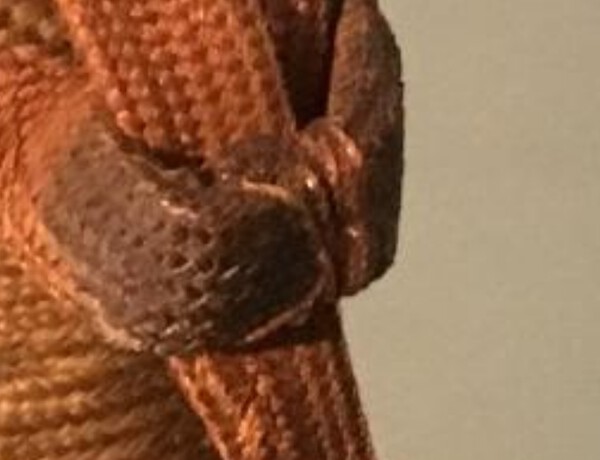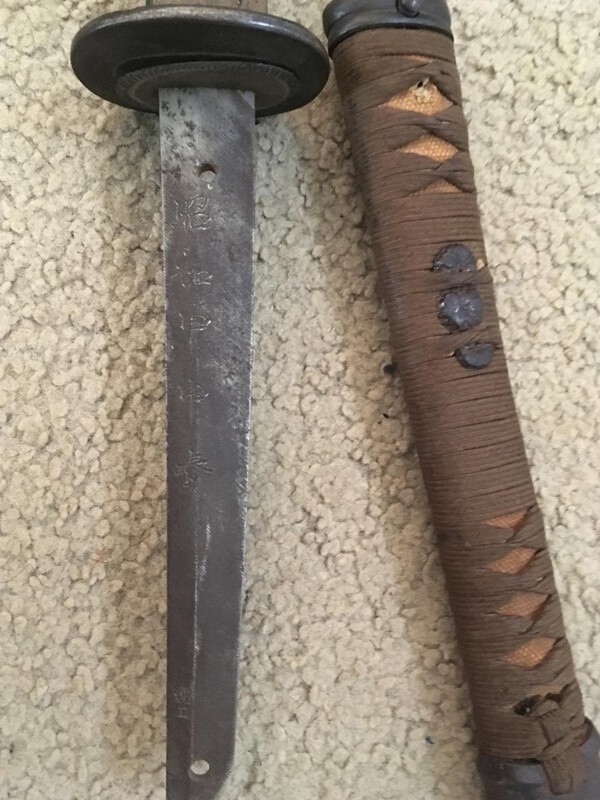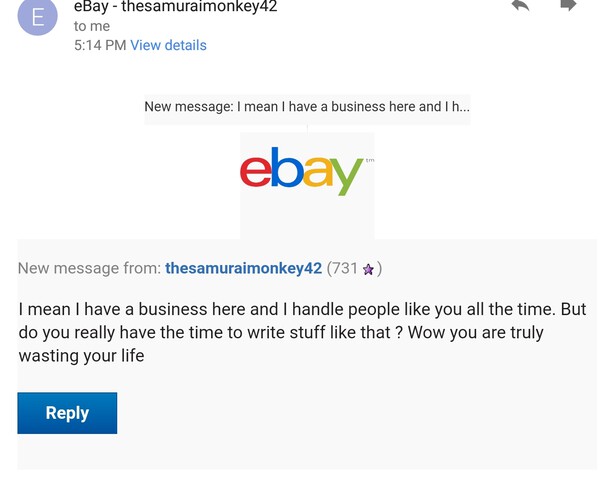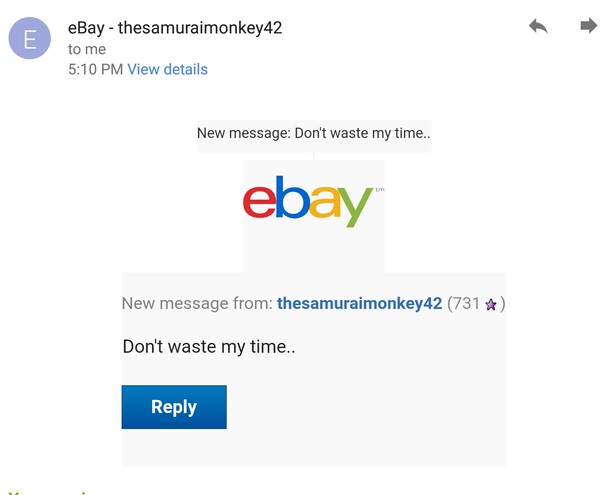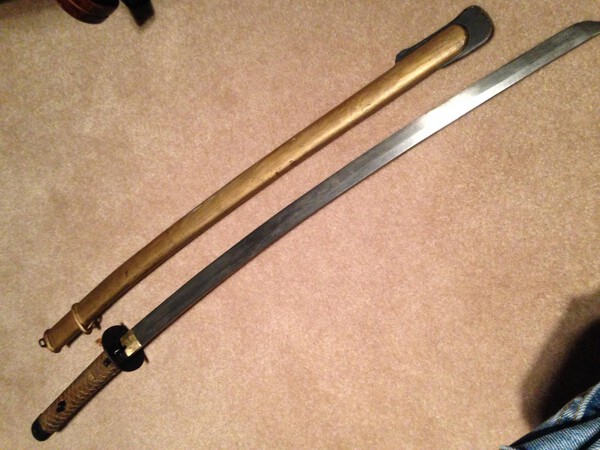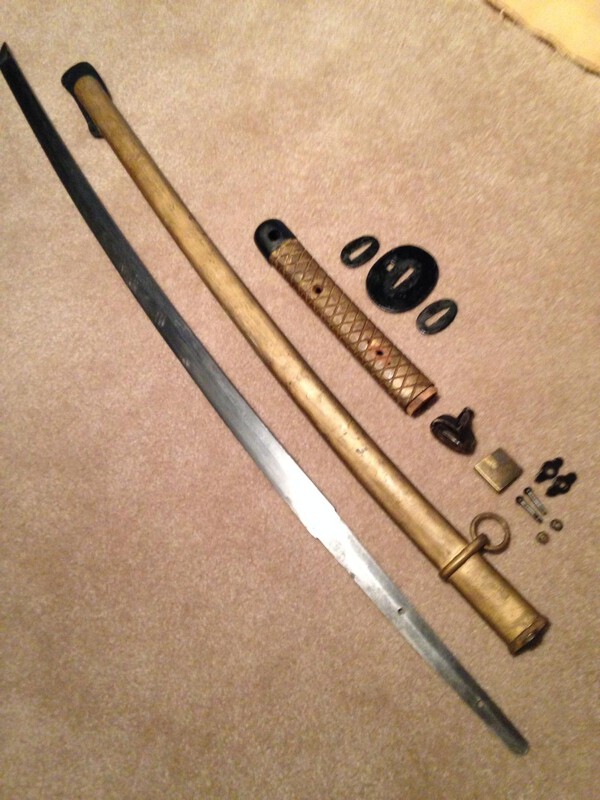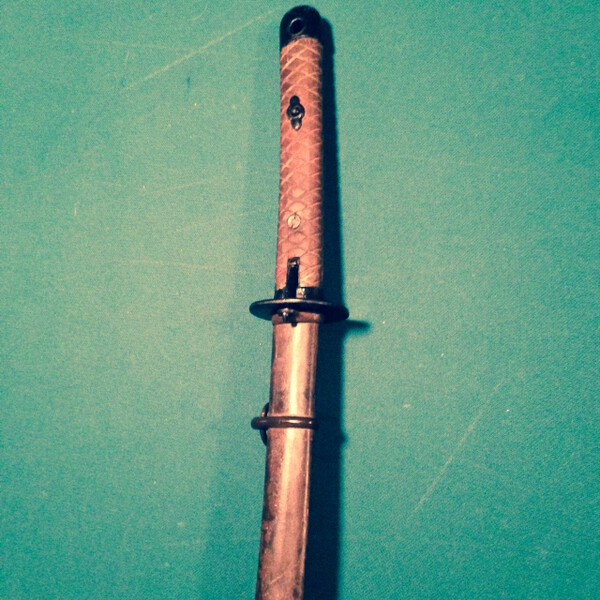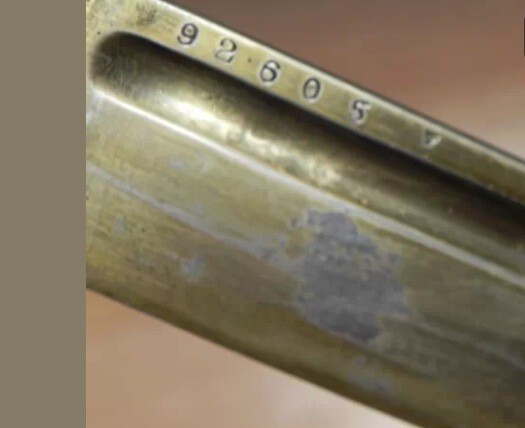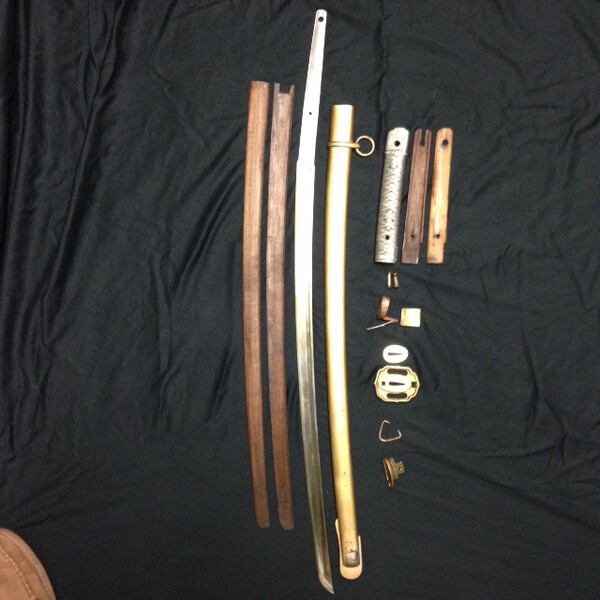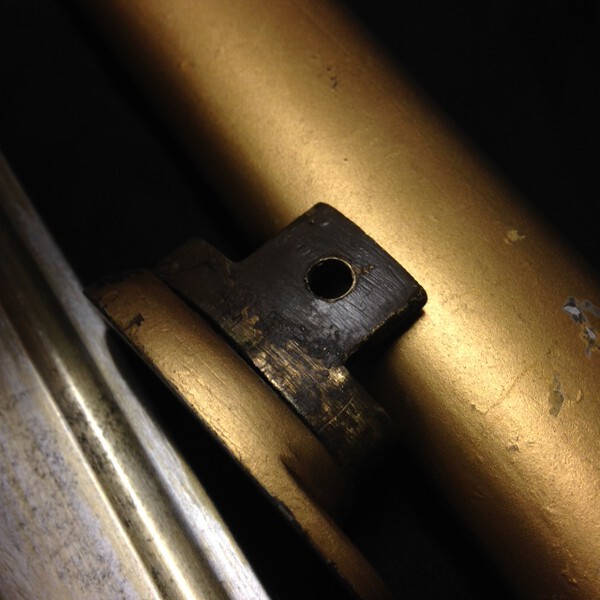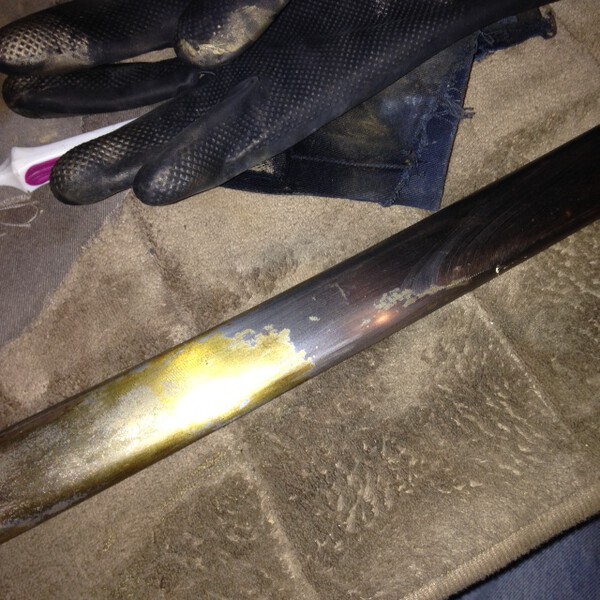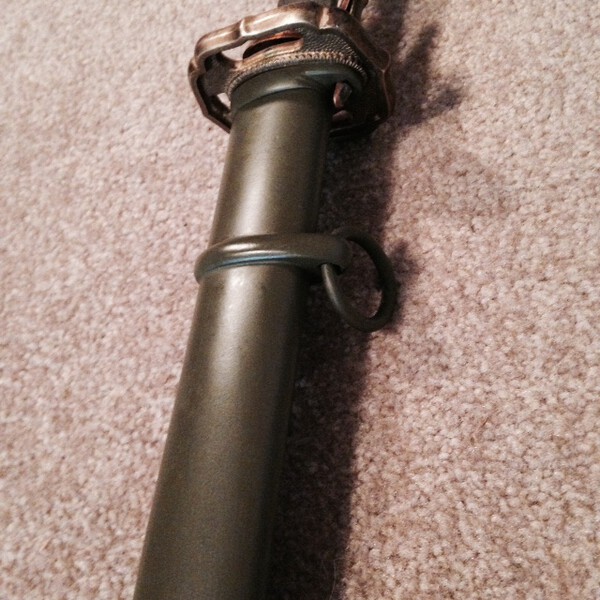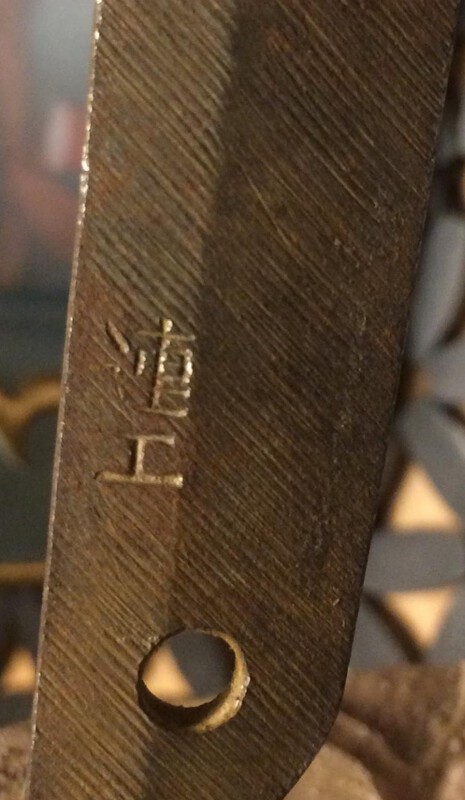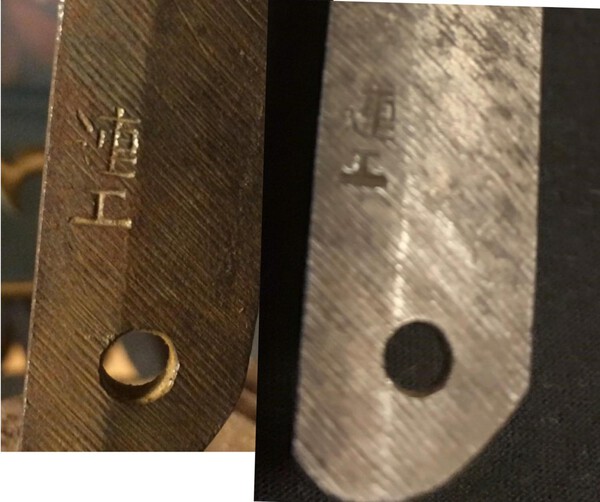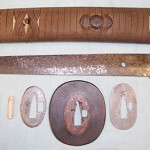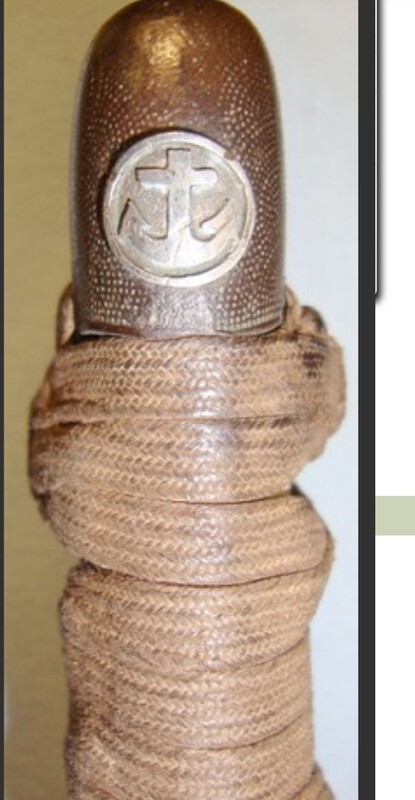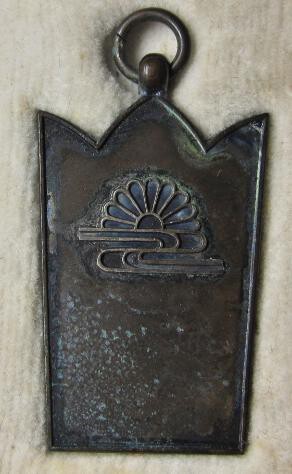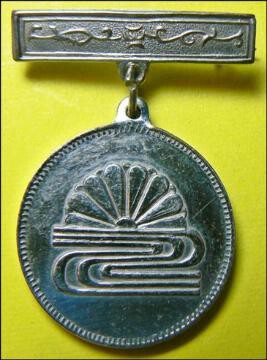-
Posts
13,915 -
Joined
-
Last visited
-
Days Won
169
Content Type
Profiles
Forums
Events
Store
Downloads
Gallery
Everything posted by Bruce Pennington
-

Attention Mantetsu Owners: A Survey
Bruce Pennington replied to Bruce Pennington's topic in Military Swords of Japan
Yes, I like it! Good idea! -
Wow, how beautiful. Ohmura's site should have this! Did you catch the statement that it was made shorter due to his being the Chief of a tank regiment? "And It Is Somewhat Shorter Because Spring Rao Was A Chief Of Tank Tank Regiment."
-

Anchor Mon On Rinji (Type 3)
Bruce Pennington replied to Bruce Pennington's topic in Military Swords of Japan
Clears up my concern that it was a post-war Bubba-job! And what's with the end of the tassel? It seems to be joined in a unique way: -
John, As you find more of these, it's beginning to have more of a feel that these are wartime original. Not a certainty, of course, but it's creating the possibility.
-

Attention Mantetsu Owners: A Survey
Bruce Pennington replied to Bruce Pennington's topic in Military Swords of Japan
Thanks Trystan, very informative! Sorry about the "I". I just don't know how to do that with my keyboard, but I've got it now and can copy/paste "工", ha! I've updated the Mantetsu Study Charts with tabulations on blades with Nan, Ren, Ren/工, and W stamps. Out of 32 '43s, 14 have Nan stamps (and 1 '44 has it) Of 11 '44s, 8 are Ren stamped, with 3 Ren/工. I have 8 blades W stamped - 4 '42 (all Koa), 3 '43, and 1 '44 If our theory on the source of the W stamp being the Tokyo Arsenal finishing blades supplied by Mantetsu, as per Nick Komiya's document, it's clear the practice was in place a couple of years before the document's date of 1944. I suspect there were orders made in the previous years, and this single document is the only one we have knowledge of. The existance of Koa Isshin blades in '43 & '44 raise the question of WHO was making blades with the Nan and Ren stamps. One option is that the SMR Mantetsu factory was making them all, and for some reason was making both Koa and non-Koa blades simultaneously. Another option is that, per Ohmura's theory, Mantetsu had taught the Mukden arsenal to make blades the Mantesu way and blades marked with Nan, Ren, and Ren/工 are Mukden manufactured. Option 3 is that Mantetsu was supplying unfinished blades to Mukden just as they were to Tokyo, and the finished blades were stamped by Mukden accordingly. BUT we have 2 '43s with BOTH a Nan and a W stamp, and 1 '44 with both stamps!!! This COULD bring us back to option 1, with SMR Mantetsu making them all and using Nan, Ren, Ren/工, and W stamps for reasons yet unknown. So, still very little facts, and much speculation, but it's been fun chasing it down. Document 3.0 attached.mantetsu serial numbers (1)-converted.pdf -

Attention Mantetsu Owners: A Survey
Bruce Pennington replied to Bruce Pennington's topic in Military Swords of Japan
Ok, I've got 3 now, all Spring 1944: Se 2340, Se 3575, and "?" 199. Had an interesting discussion with someone about the "I", or rail stamp. It was proposed that the "I" means, or represents "Factory or Work" in both Chinese and Japanese. If so, the Mantetsu logo simply says "Mantetsu Factory". Likewise, the combined "Ren" and "I" would say "Mukden Factory" and support the idea that these blades were made at the Mukden Arsenal, or at least finished from Mantetsu supplied blades. -

The Mysterious "w" Stamp!
Bruce Pennington replied to Bruce Pennington's topic in Military Swords of Japan
Update: From my collecting serial numbers, I have checked and found "W" stamps on 4 '42s, 3 '43s, and one '44. So, if Nick's document dictating the supply of unfinished blades to the Tokyo arsenal explains the origin of the stamp on Mantetsu blades, the practice was in place before '44. -

Help With Nakago Signature, Seki Gunto
Bruce Pennington replied to acoyauh's topic in Translation Assistance
Just an FYI: the stamp is a "Showa" stamp. Used between mid '40 to early '42, so if the other side isn't dated that will give you a ballpark. -
We'll need Steve or Stegel to evaluate that one! Nice tsuba, but horrific seppa. Inspector mark on blade is nice, but horrible on the fuchi. Can't say I like the bohi (fuller groove) for a supposed Tokyo blade, but I've been wrong before. Steve? Stegel?
-

Kyu-Gunto Opinion And Translation Request
Bruce Pennington replied to zook's topic in Military Swords of Japan
I'm no Type 19 expert, but it sure looks nice to me! -
I told him I'd report him if he didn't remove this. Here's his reply. So, I reported him. Don't know what will happen, I've never tried that before!
-
Yes, thesamuraimonkey42, is another one of those unscrupulous sellers.
-

Sometimes Terrible Things Happen
Bruce Pennington replied to Erwin's topic in Military Swords of Japan
Nice job on that one Steve! Gorgeous! I didn't know G.I.s were doing that, but comparing the two, I still feel mine was a plasticized paint, very thin and not aged like yours. -

Sometimes Terrible Things Happen
Bruce Pennington replied to Erwin's topic in Military Swords of Japan
Wow, what a transformation! Beautiful! (Do I already have the date and serial number on that one?) -

Sometimes Terrible Things Happen
Bruce Pennington replied to Erwin's topic in Military Swords of Japan
Agree. Interesting topic though. -

Sometimes Terrible Things Happen
Bruce Pennington replied to Erwin's topic in Military Swords of Japan
I enjoyed the work, but it WAS work! I used acetone just in case the original paint was still under there, but it wasn't. My late war 95 also had a horrific re-paint. When that was removed, the original paint was still there thankfully! -

Sometimes Terrible Things Happen
Bruce Pennington replied to Erwin's topic in Military Swords of Japan
Erwin, My sentiments exactly! I have a Type 95 NCO gunto that was totally stripped and painted gold. Even the blade was painted with a transluscent gold! In researching it, back then, people came up with some interesting insights, like - right after the war, many still hated the Japanese and anything representing Japanese, so guys would use war swords as weed-wackers and wood chippers intentionally out of disrepect. Another guy grew up in England to a theater family. He said, as a kid, he saw "piles" of swords backstage, most painted gold (when you're doin The King and I, the king certainly wasn't going to have a G.I. green sword! so they painted them gold). I stripped mine and repainted. -

Kyu-Gunto Opinion And Translation Request
Bruce Pennington replied to zook's topic in Military Swords of Japan
It’s not being sold by Showa22, by chance? -

Attention Mantetsu Owners: A Survey
Bruce Pennington replied to Bruce Pennington's topic in Military Swords of Japan
Found another '44 with Ren and "I" stamp. Don't have the serial number on it, but have messaged the owner. Hopefully he's still active! Like Neil's, it's in Rinji, Type 3, mounts. -
Anybody seen anything like this before?!?! It's posted on this website, https://www.warstuff.com/RARE-WW2-1945-Japanese-Marine-Landing-Forces-Off-i1555977.htm but here's the pics:
-

Mismatched Officer's Gunto And Saya Or...?
Bruce Pennington replied to kotkinjs1's topic in Military Swords of Japan
About 3 different areas of hobby/enthusiasm involved in your question! Some folks love the craft of restoring a blade to as close to original condition as possible, with fittings. Some of us believe that every war sword deserves respect and is worth collecting/preserving. Some are in it for the buy/sell challenge, or just the chance to earn more "fun money". But many of us just collect, and each of us collect different things for different reasons. -
Well, Tom’s looks very similar to the last one on the bottom right. Not the same, but similarities.
-

Mantetsu Mei Question
Bruce Pennington replied to Bruce Pennington's topic in Translation Assistance
Neil, The true answer is "Who knows@!#!?" But, personally, I'm going with - it's a "tip-o'the-hat" to the SMR factory. By removing the circular "M"around the rail, it could indicate this was NOT made at Mantetsu, but made in the Mantetsu-way. But a sample of 1 is obviously way too little to go on (though, it does add to the Nan/Ren evidence). Thanks for the post! -



